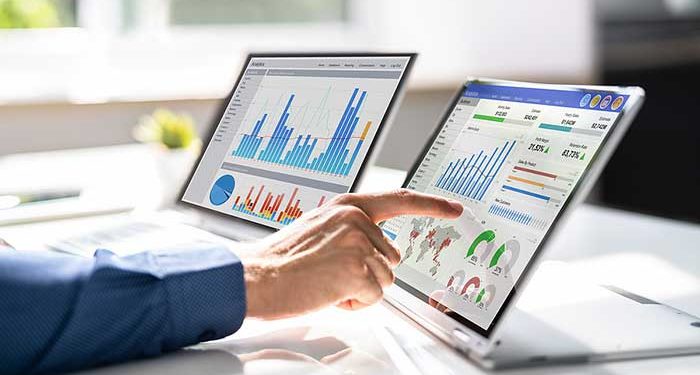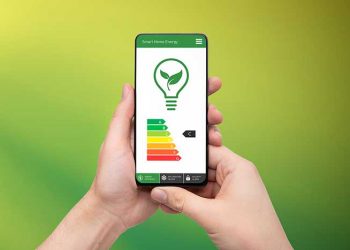Big data has grown over time to play an important part in the modern business world. The information companies collect on their customers now is valuable and helps them truly understand what they want. In addition, big data can help companies grow over time and make strategic decisions based on hard facts.
One of the most vital concepts within big data is data analysis. The need to analyze data properly is more important than ever in business, which has seen the demand for trained data analysts rise. Within data analytics for business, there is a raft of effective tools and techniques which expert analytical staff rely on. Data visualization is one example and something most data analysts use in their daily roles.
But what is data analysis, what is data visualization, and how is visualization applied in real terms?
What is data analytics for business?
As noted above, pretty much all companies now collect masses of data on customers each day. This can be from a variety of sources such as websites, social media channels, e-mail subscription lists, and more. Big data like this can be very useful for organizations to learn more about their core audience, what they want, and which areas of the business are working well or need improving.
These benefits only appear when companies can analyze the data they collect properly. As a result, the ability to take large sets of data and draw actionable insights from them through analysis becomes vital. This could involve looking at data collected and noticing people from a certain age group are a business’s main audience or a certain item sells best.
Once these insights have been gained through data analysis, the business can divert more resources to market themselves to the age group most interested in their services or make more of what sells best.
Where can you learn more about data analytics in business?
While the above provides a good general overview of data analytics for business, you may wonder how to pick up the necessary skills for a career in this field. Data analytics is a specialized role to work in, and this means picking up expert knowledge before moving into it is crucial.
The best way to go about this is through academic study at a higher level. Enrolling in a degree course that focuses on business analytics, for example, will teach you about data analysis in the corporate world and the core concepts within it.
The online business analytics master program at St. Bonaventure University is a popular example and has no GRE or GMAT requirements for entry. A 100% online program, it is designed to prepare students for a successful career in data analysis.
What is data visualization?
One of the most important concepts within data analysis is data visualization. But what does this refer to exactly? In its most basic terms, data visualization is the process by which you take the information gathered from other sources and put it into a visual context. By doing this, you are making data more visual and presenting it in a new context.
How is data visualization applied within data analytics?
We have noted that data visualization is a core part of data analytics. But just how is it applied within the analysis of data? The most common include those shown below:
- Tables
This can often be the simplest and most common way of using data visualization within analytics. Tables consist of rows and columns, which can be used to compare different variables. The major advantage of tables is that they present large amounts of data in a visual, structured way.
- Pie charts
Charts are widely used across data visualization and are an effective way to present data. Pie charts are divided into sections showing how much of each section makes up the whole. As a result, they are a simple way to show how each part of a business or process contributes to the whole.
- Line charts
Line charts (and other charts such as area charts) plot several data points over time to highlight progress or change. As the name suggests, line charts use lines to connect the data points and visually show any changes.
This could be for anything from customer satisfaction levels over a period to monthly revenues over a business year. News that Target’s All in Motion brand made $1bn in sales over one year, for example, may well have led analysts there to dig into the sales generated over this period by month and present their findings in a line chart.
- Histograms
Another form of the chart in data visualization, histograms are like bar charts but have no gaps between the bars. They essentially show the quantity of data which falls within a certain range by plotting it in bar chart format.
- Heatmaps
Common when needing to analyze behavioral data via location, heatmaps help to give a visual representation of any insights found. Treemaps can also be seen in data visualization, showing hierarchical information as a series of nested shapes.
- Infographics and posters
Posters are nothing new but a great way to present data visually. They can be much more engaging than showing the same information as pure text on the page. Although they can include text still, posters usually employ visual elements to help them stand out. Posters are also useful for taking information from a range of data sources and combining them into one easy-to-understand format.
Infographics are similar to posters and use images/charts (plus some text) to present data. This enables them to explain topics in a straightforward way and helps with the understanding of what data analysis has discovered.
- Scatter plot graphs
This type of visualization technique in data is great for establishing the relationship between two variables, often in terms of regressive data analysis.
- Animations
One of the newer methods within data visualization is animations. While they have been around for a long time, more and more people within analytics are using them now. As you would expect, this can cover including animated elements in a presentation or creating an entire animated short to showcase your analysis.
Why is data visualization so important in data analysis?
Although knowing what data visualization is and how it is applied within data analytics is worthwhile, it is also important to focus on what benefits this technique offers.
The most effective part of data visualization within analytics is its visual element. All the above applications are highly visual (even if they may also include text and numbers) and this is why so many data analysts love this approach.
But why else is data visualization so amazing from an analytical perspective?
- 1. Data visualization makes analysis easier
While this technique can mainly be used to present data after it has been collected, reviewed, and modeled, it still plays a role in the analysis. This is because the human brain is known to be better at understanding and drawing insights from visual sources.
Therefore, taking raw data and putting it into a visual context, therefore, can make it easier for data analysts to home in on trends, patterns, and other important findings. This is not always something that is easy for people to do when looking at the same large sets of data as text or numbers on the page.
- 2. A more effective way of presenting data
Although visualization has real benefits for analysis, it is also super important when presenting data. Data analysts for example will often be required to present their findings to team leaders or senior members of the company they work for.
It is important to showcase the data you reviewed in an interesting way and put across what it tells you in an engaging manner. Data visualization helps you do this and makes getting across what data you analyzed and what it told you much more effective.
This technique can also make it much easier for people who are not data analysts to understand what you have been digging into and what insights you have drawn from it. This is key to them having enough trust in what you say to act on your findings.
A good example is showing the CEO of an online Cloud gaming platform a rise in monthly subscribers since updating their network in chart format. This is much simpler to understand and much more effective than presenting him the information as numbers on a page.
- 3. Quicker understanding of insights and data
As we have noted already, the human brain is hard-wired to enjoy visually presented information and take it in much more quickly. For example, it is much quicker to pick up what a poster is telling you compared to reading a few pages of a text document with the same data.
This has real benefits in the business world, where people are often busy with their own roles and might not have much time to discuss any insights data analysis has thrown up. By using data visualization, analysts can show others their findings in the most efficient way. This can prove especially useful when speaking with senior figures, who might only have a few minutes to look through what you have found.
Best practices in data visualization
To get the above benefits from using data visualization as an analyst, you need to employ best working practices in this field. But what might they be?
A key thing to consider is setting the context around the data you have visualized and what it is showing. It is a good idea to provide your audience with general background on the data and why you have been analyzing it first, for example. This helps them understand what they are being shown and why they need to take note of it.
It is also key to know your audience well before presenting data visually to them. This enables you to use the right visualization tools for the right audience to achieve the best results. If you are showcasing your analysis to a VP of marketing who hates pie charts, it is not a good idea to use these when discussing things with them!
What else should you know when using data visualization?
It is also essential to choose the most suitable visual medium for what you are trying to show or for the right type of dataset. This can be useful not only in presenting data to others but also when using visualization to help you spot patterns. Line graphs, for example, show time series information effectively, so it is best to use this type of visualization tool if this is the dataset you are reviewing.
Another great tip when it comes to data visualization is just keeping it simple. It is easy to get carried away and add too much detail to your charts, graphs, or posters. This can leave them cluttered, hard to read, and tough to draw key insights from. By keeping it simple, you avoid this and make visual data much easier to work with.
Data visualization is important for data analytics
Data analytics is key in the modern business world and a career path that is becoming more popular by the day. With the demand for data analysts being driven by the useful insights they pull from company data, you can see why this is true. This trend should continue as data becomes increasingly vital in business.
Data analysis, though, is only effective if you can show the data which has been reviewed and any findings from it in an easy-to-understand manner. For this reason, data visualization is very important within analytics and a key skill anyone working in this field should know about.





